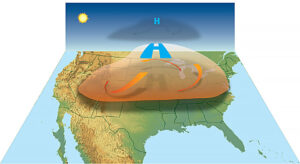We use soap on a daily basis and don’t question its effectiveness, however, have you ever wondered where did it come from and how does it work?
The history of soap
The first detergent was soap, which dates back to the ancient Babylonians, around 2800 B.C. Inscriptions describing the recipe for soap have been found on clay containers. This mixture combined fats mixed with wood ash and water and was utilized by the Babylonians to wash wool and cotton before weaving the fibers into cloth.
Subsequent civilizations made use of soap for various purposes. The Egyptians, in 1550 B.C., combined natural oils with alkaline salts to create a substance used to treat skin diseases and sores and for personal hygiene. The ancient Romans in the first century A.D. used soap for purposes other than cleaning the body, such as cleaning statues and clothing. Soap, as we know it today, was created by Arabic chemists in the seventh century by mixing
vegetable and aromatic oils with sodium lye. This recipe has remained relatively unchanged. Through the centuries, increasing awareness of the importance of personal hygiene increased the demand for soap. By the twentieth century, breakthroughs in chemical engineering made the production of modern commercial soap possible. One of the most controversial enhancements to soap was the advent of antibacterial soap. Studies have shown that antibacterial soap has limited efficacy in neutralizing pathogens on the skin and does little more than plain soap and water. Furthermore, it is postulated that the prolific use of antibacterial soaps may be creating drug-resistant pathogens.
How does soap work?
Whether it is dried on food on dishes or dirt and mud on your skin, they are infused with oil. This grime is difficult to wash off with water alone because water molecules are more attracted to each other than they are to oil. In other words, oil and water do not mix, thus, they separate into two separate molecules. Oil molecules are large and they are not polar (having a positive and negatively charged side), water is a very polar molecule, therefore it can’t bond with it. This is why trying to use only water to wash dirt off your hands off does not work.
Or, when you try to wash a greasy pan with only water, it just runs off without removing the dirt
and grime because the oily particles can’t bond with water.
Soap works by breaking up the oil into smaller drops, so it can mix with the water. This is accomplished because soap is comprised of molecules with two very different ends. One is hydrophilic (mixes or dissolves in water), the other end is hydrophobic (does not mix with water, and thus is repelled by it). Since soap molecules have properties of both nonpolar and polar molecules, the soap acts as an emulsifier (a substance that diffuses one liquid into another unmixable solution).
When soap and water are mixed, the soap molecules position themselves into tiny clusters. The hydrophilic part of the soap molecules points outward, the hydrophobic components clump together on the inside of the molecule. The hydrophobic parts don’t contact the water, due to the repulsion.
These collect the oil particles in the center and are trapped in the soap, and then when water is washed over your hands, the hydrophilic parts are attracted to water, taking the soap, and the grime connected to the soap with it.
So now the next time you use this common household item you will know both its history and the scientific principles behind it.










